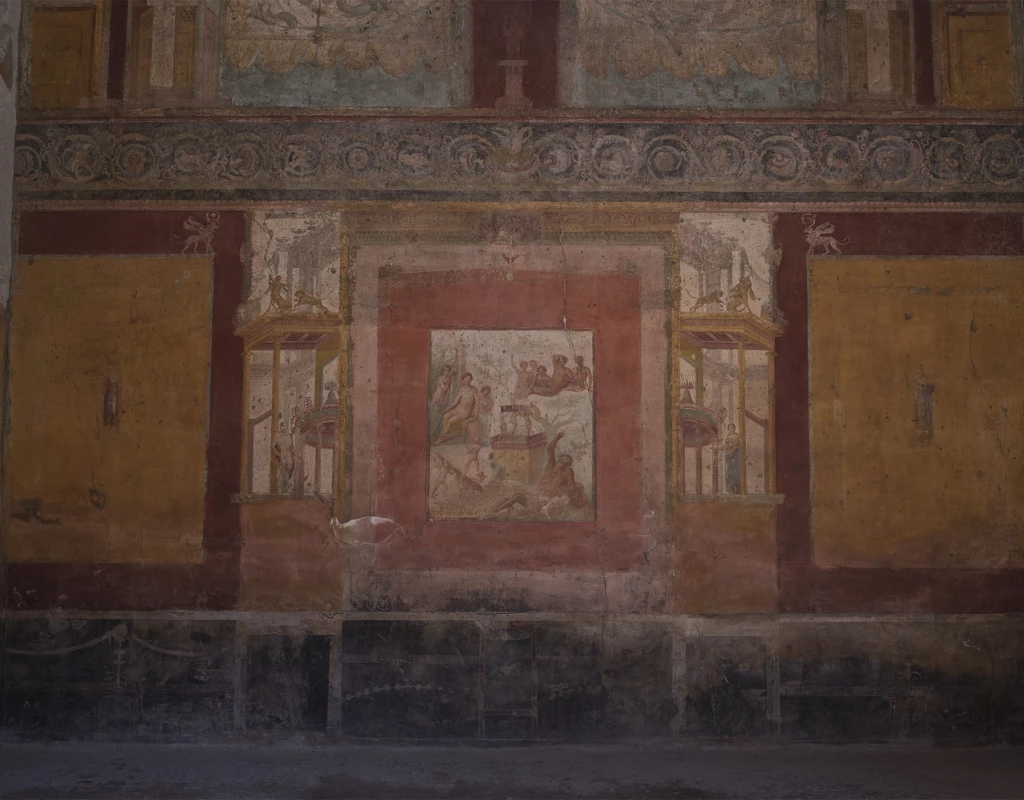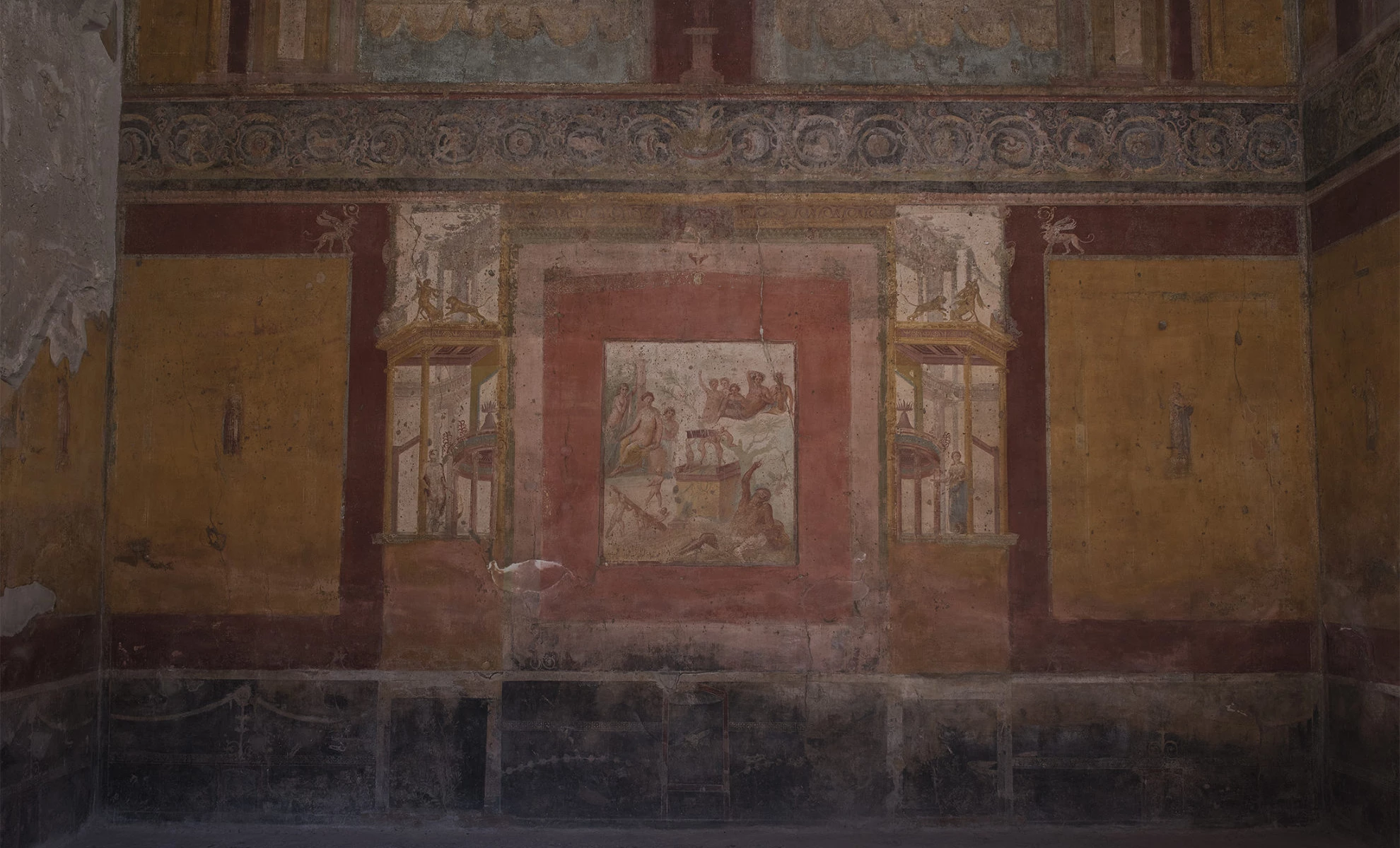It is fascinating to recreate the history of a building in Pompeii by studying the decorations, recovering the spaces and putting together the traces left by those who lived in those places 2000 years ago.
For many domus this job is more complicated because there are many gaps as well as elements inexorably canceled by time. Some, however, have survived oblivion: for example, you may be lucky enough to find inside a house a sign capable of revealing something about the life of that place before the eruption, as happened in the domus of Sirico.
Scene of drunk Hercules and Onfale | Ph. Anna Monaco
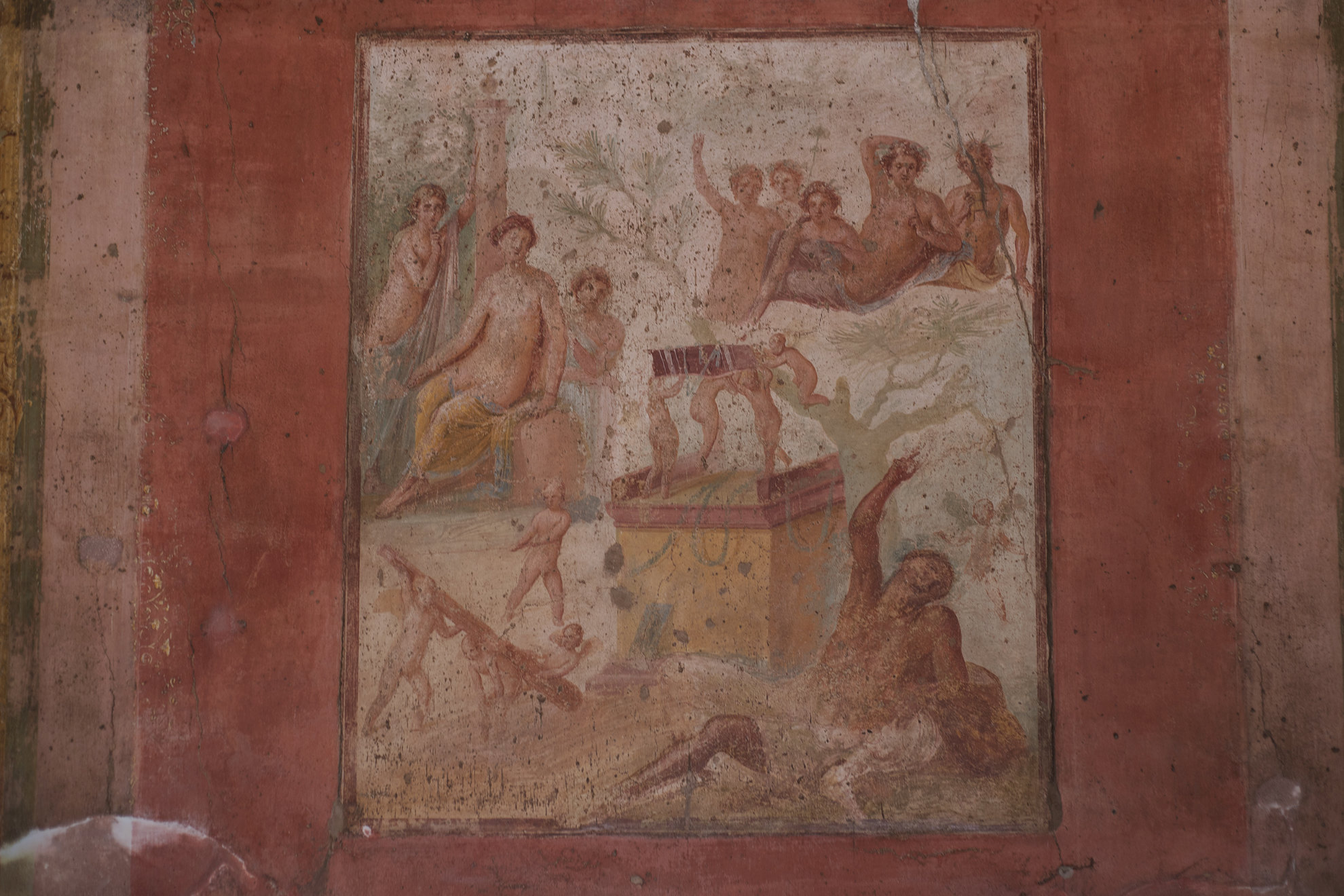
A bronze seal with the name Siricus was found here, and the researchers' hypothesis focused on P. Sedeus Siricus as the last owner of the house. He was known in the city for his political activity and for the public offices he held, and he also had a strong propensity for trade as suggested by the inscription SALVE LUCRU - that is: welcome money! - on one of the house entrances. The house was in fact the result of the union of two buildings, one overlooking Vico del Lupanare and the other on Via Stabiana.
Fresco depicting the hero Aeneas | Ph. Anna Monaco
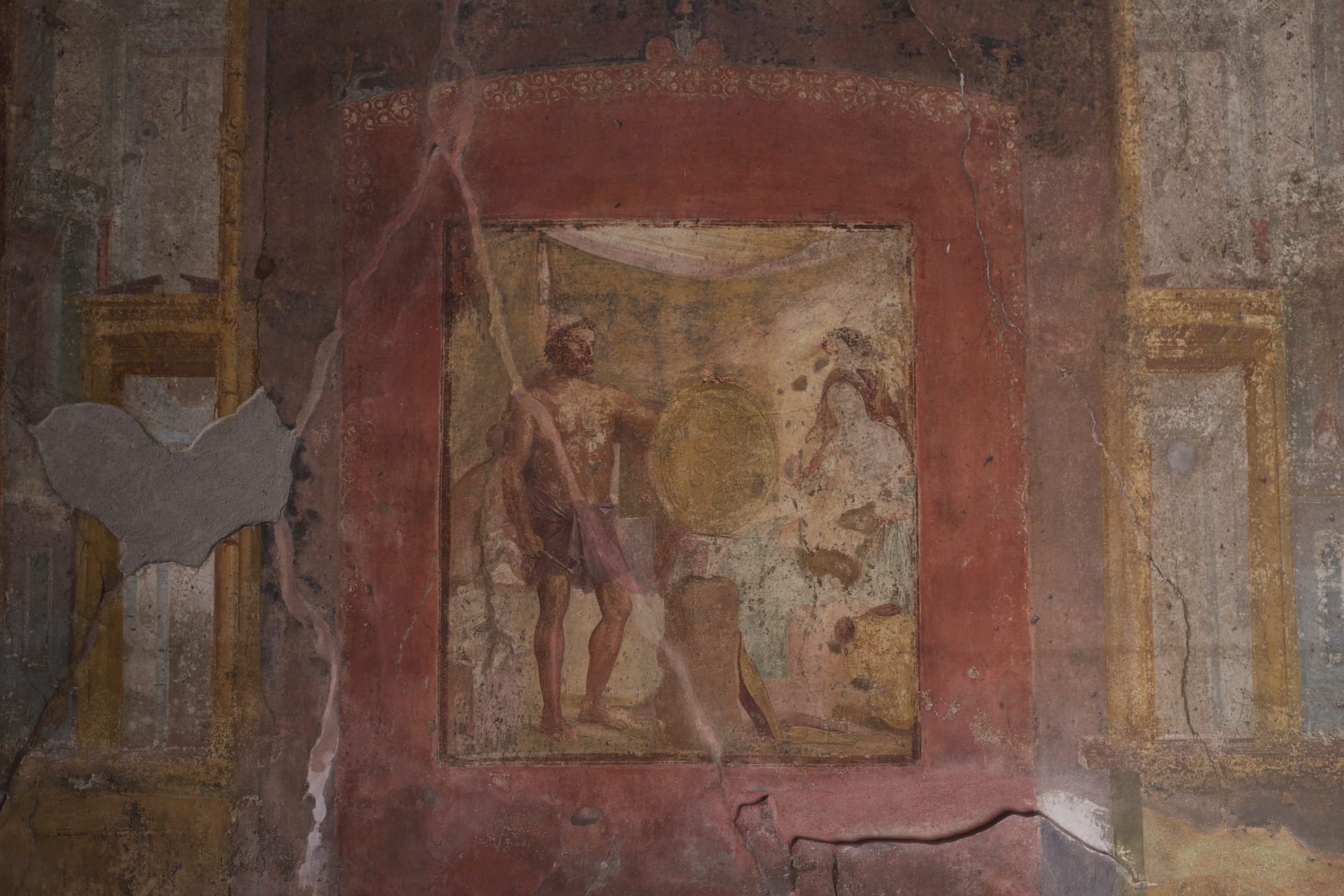
Despite having a somewhat different shape than usual, the house undoubtedly had a high-profile decoration, in line with the social status of the owner, and most likely was being renovated at the time of the eruption.
Among the rooms that recall the fashion of the time is the exedra that keeps one of the most elegant walls, an example of the IV Pompeian style. Inside, the dominus welcomed guests who could admire, between the lively ocher and the false architecture, a picture with the mythological scene of drunk Hercules and Onfale. A scene that evokes lightness, abandonment to passions, the suspension of daily activities.
The casts made by Giuseppe Fiorelli | Ph. Anna Monaco
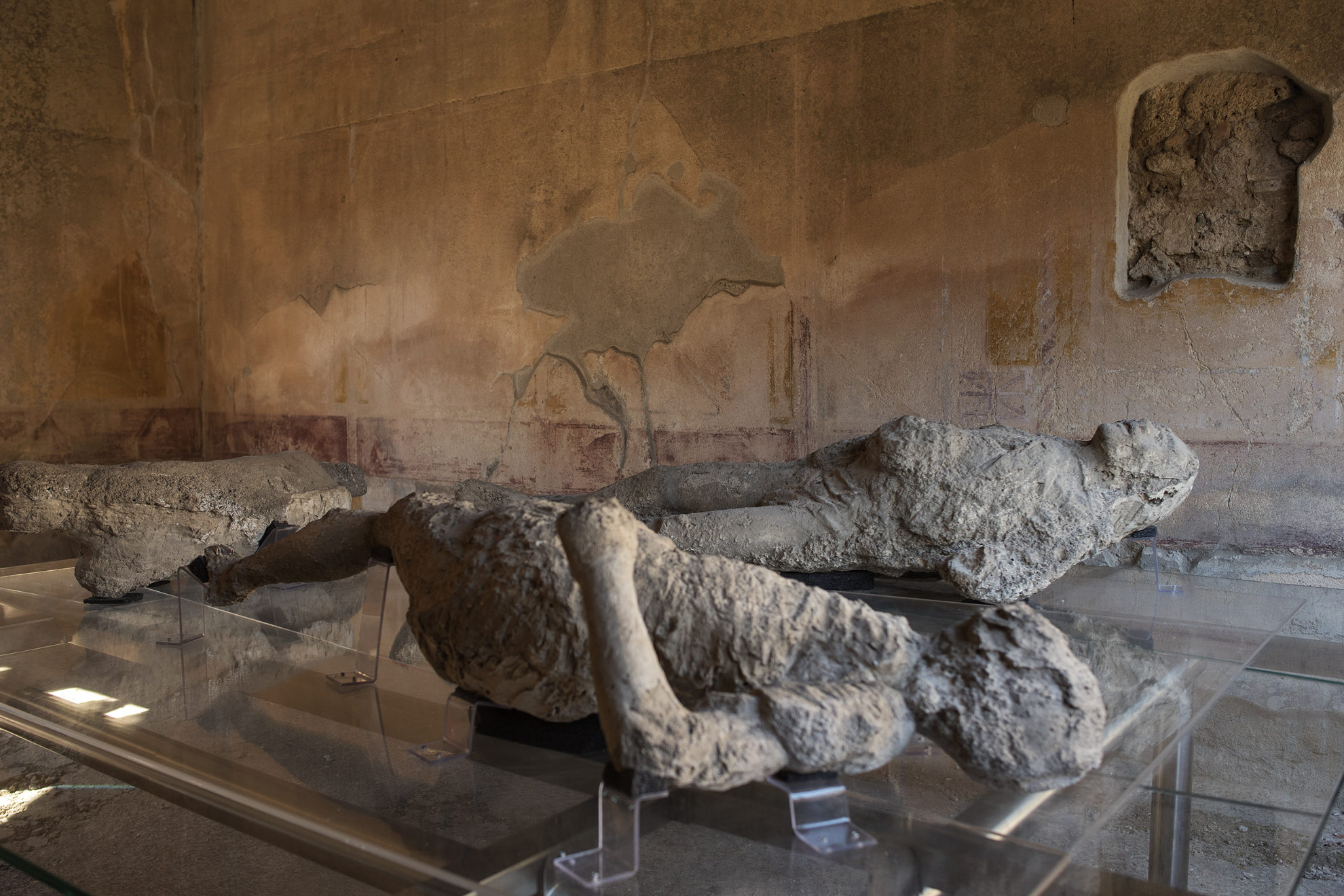
It is not the only scene of this kind in the house. Others have the mythological hero Aeneas as their protagonist, and some researchers have wondered about the reasons of this choice. Perhaps a man so determined, ambitious and attracted to the material aspects of life within the walls of his home wanted to indulge himself in disengagement and doing nothing, also involving his guests. But we will never know this.
Ph. Anna Monaco
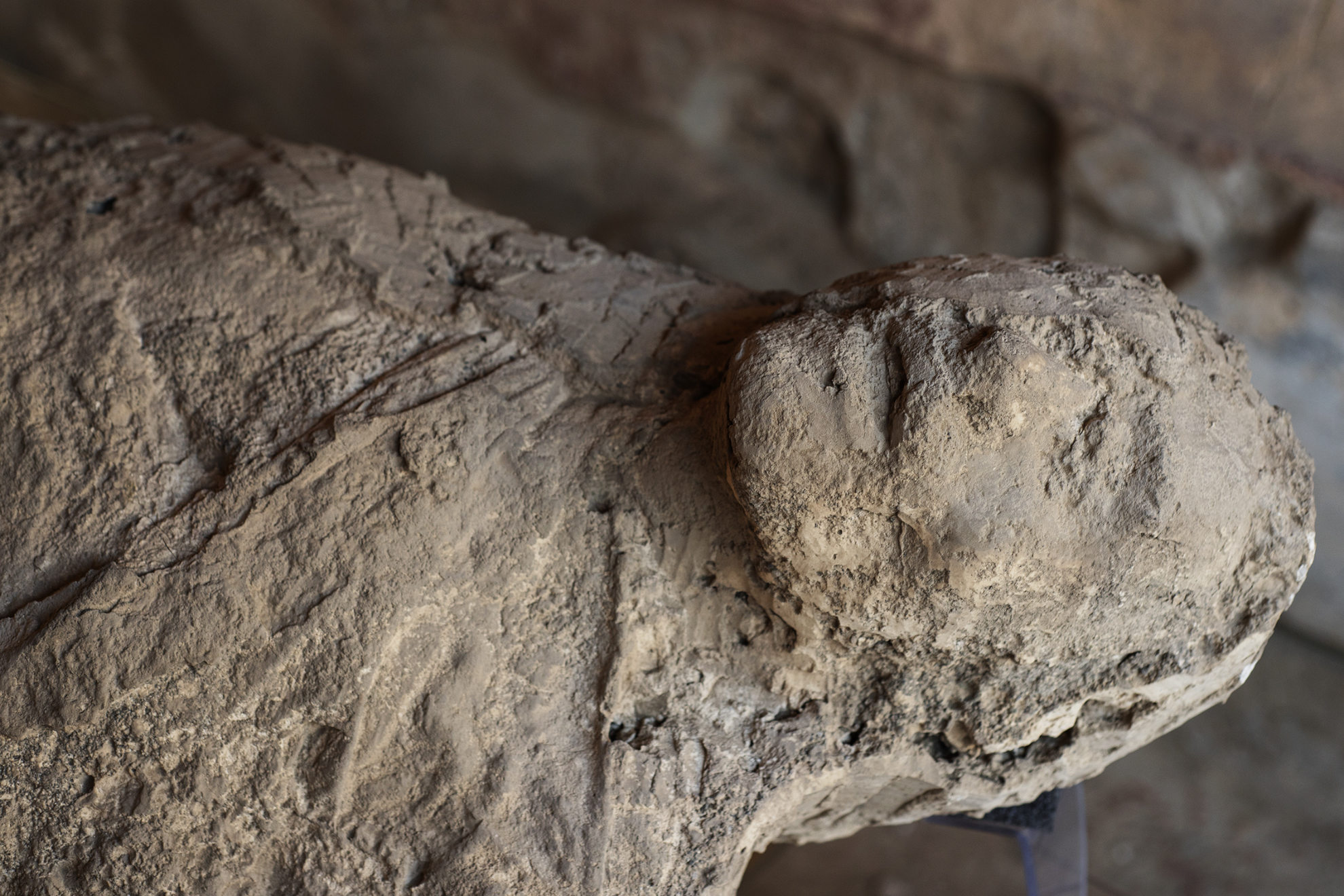
Today in the house of Sirico, something more than a painted image prompts the traveler to reflect: the casts of the bodies found near the house. These are the first examples, made by Giuseppe Fiorelli, the archaeologist who promoted this innovative method of preserving the finds. Once again Pompeii reminds us that death does not spare even loves, myths and riches.
